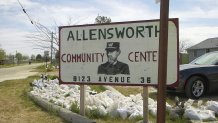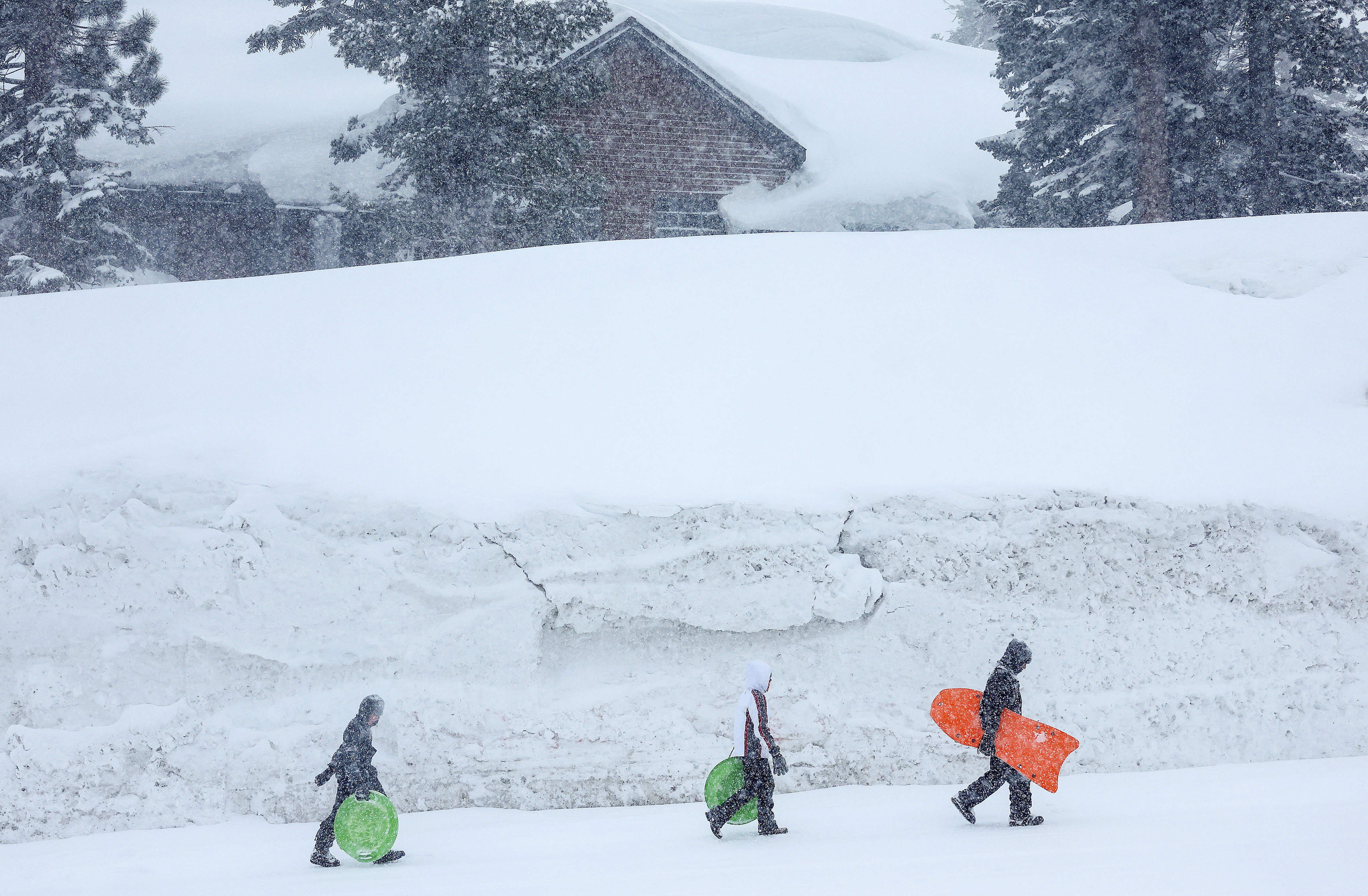Sown into the fertile loam of the Central Valley some 70 miles south of Fresno, lies the historic town of Allensworth, perched amid the intersection of three rivers and the intersection of history and agriculture.
The town, founded by a former slave-turned-Union Army officer Allen Allensworth in 1908, became California's first community founded and funded by African Americans. Since its birth among the alfalfa and orchards, it's become a tale of two Allensworths – the original homes are now part of a California State Parks museum while the living town of 600 now is 97% Latino farmworkers. Both communities, the old and the new, are now threatened by the monster snowpack thawing in the nearby Sierras.
"That’s a huge lake in one sitting coming our way," said Tekoah Kadara, whose late grandmother Nettie Morrison uprooted from Texas in the 1970s to settle in Allensworth, becoming the town's unofficial mayor.
After a winter of record rain and snow, state water officials estimate the Sierra snowpack is sitting at 300% of normal, sounding the alarm for the potential of heavy flooding in small rural communities like Allensworth, which has already braved a wet March that forced evacuations.
Get a weekly recap of the latest San Francisco Bay Area housing news. Sign up for NBC Bay Area’s Housing Deconstructed newsletter.
"On the one hand it looks so beautiful," said resident Kaode Kadara, looking out at the mountain tops tipped with snow. "On the other hand it’s starting to create some panic for us – the unknown."
The unknown is how fast temperatures will rise and how swiftly they'll bring down the snowmelt. Not far from Allensworth, the Tulare Lake basin – which dried up in the 1800s as cities and agriculture harnessed the valley's rivers – has returned in recent wet months to inundate farm lands with the potential for 2 million more acre feet of snowmelt to arrive by July.
"It’s scary," said Kaode, standing at the Allensworth Community Center, where volunteers were handing out sandbags. "It’s a lot of anxiety based on what’s coming, but we’re not scared."

There was plenty of time for fear in early March when heavy rains filled the White River and channels designed to shuttle water down the BNSF railroad tracks and away from Allensworth. But as the rains overwhelmed those channels, townspeople took it upon themselves to use tractors and their backs to construct barriers blocking the water from entering town.
In the deluge, Kadara realized culverts running beneath the railroad tracks were directing water into the eastern part of the town, which forced evacuations of homes. Kadara wrote a letter to BNSF, asking it to send out a hydrologist to inspect the path of the water, which he believes is intentionally aimed at Allensworth. He hadn't heard back.
"For reasons that is unknown to me and a number of community members, this flow at this one location is focused at this one culvert which insures water comes into the community," he said.
That night of flooding in early March not only demonstrated the town's mettle, but also its lifelong battle against forces from outside of Allensworth.
"All that snow when it melts is going to come this way," observed Goana Toscano, a resident who volunteers at the community center.
All around the small rural town of partial dirt roads and scrappy yards filled with geese and goats, rows of sandbags forecasted the coming battle of people versus flood. Throughout a recent day, a steady stream of trucks loped into the community center for another load of sandbags. The center was also providing food and emergency supplies for townspeople, many whose farm jobs were lost when the waters of Tulare Lake claimed hundreds of acres intended for tomatoes and cotton.
In the center of town next to Allensworth's modern school, a rooster crowed almost as if on repeating loop, and a group of kids swung from the community center's squeaky swing while neighbors used a bucket of feed to lure the family's goats through the tall grass of their yard.
The prospect of losing the living town – as well as the historic one – to floodwaters felt unthinkable to Kaode. His mother-in-law Nettie Morrison had successfully fought off a mega-dairy that threatened to move next door. The town had survived the death of its founder and spiritual leader Colonel Allensworth in 1914 when he was hit by a motorcycle – twice. It survived the economic devastation brought on when its railroad stop was moved three miles down to the next white town.
Whatever deluge nature was planning to bring down the mountain, Kadara was confident Allensworth would survive that too.
"We refuse to allow this community to die," he said, his eyes fixed on the snowcapped mountains. "The motto for this community is this is a town that refuses to die."



